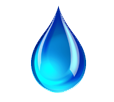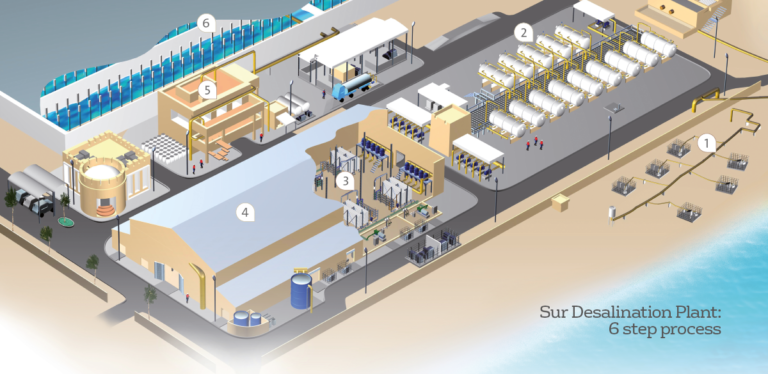
Close


 Seawater is extracted from the ground by 28 individual coastal beachwell units dispatched in 3 clusters. This specific type of catchment offers the following advantages:
Seawater is extracted from the ground by 28 individual coastal beachwell units dispatched in 3 clusters. This specific type of catchment offers the following advantages:
– Highly flexible pumping design
– Very stable quality of seawater with constant salinity, low temperature amplitude and low pH
– Very low colloidal clogging or bio-fouling index (Silt Density Index SDI15<2)
 Before passing through the Reverse Osmosis membranes, the extracted seawater must be treated with a two step filtration system. First, the water is treated by sand filters for large particle and bio-cell removal. Then, the seawater is ‘polished’ by micronic cartridge filters.
Before passing through the Reverse Osmosis membranes, the extracted seawater must be treated with a two step filtration system. First, the water is treated by sand filters for large particle and bio-cell removal. Then, the seawater is ‘polished’ by micronic cartridge filters.
 To fight against the Osmotic Pressure and to comply with the required operating conditions, the seawater needs to reach a pressure level of 60 bar which is achieved by using high pressure pumps. This process is energy consuming. To optimize and reduce the final product price, Energy Recovery Devices (ERD) with a high recovery grade (97%) have been implemented.
To fight against the Osmotic Pressure and to comply with the required operating conditions, the seawater needs to reach a pressure level of 60 bar which is achieved by using high pressure pumps. This process is energy consuming. To optimize and reduce the final product price, Energy Recovery Devices (ERD) with a high recovery grade (97%) have been implemented.
 The separation of salt from seawater is achieved through high performance Reverse Osmosis (RO) membranes. The plant is equipped with more than 7,000 RO membranes which are the heart of the process and require great care to ensure high performance and a long life. Monitoring the operating data of RO membranes guarantees a final product that complies with the most stringent International Standards of potable water.
The separation of salt from seawater is achieved through high performance Reverse Osmosis (RO) membranes. The plant is equipped with more than 7,000 RO membranes which are the heart of the process and require great care to ensure high performance and a long life. Monitoring the operating data of RO membranes guarantees a final product that complies with the most stringent International Standards of potable water.
 The demineralized water coming out of the Reverse Osmosis membranes is not potable yet. It has to be re-mineralized to comply with the potabilisation requirements.
The demineralized water coming out of the Reverse Osmosis membranes is not potable yet. It has to be re-mineralized to comply with the potabilisation requirements.
Therefore, limestones are dissolved into the demineralized water with the help of CO2 injection which guarantees essential minerals (such as calcium and magnesium) in the final product.
 Before storage, the potable water is disinfected and preserved with a Sodium Hypochlorite injection. The massive concrete reservoirs have been designed to store two days of potable water production in two separate tanks of 80,000m³ each.
Before storage, the potable water is disinfected and preserved with a Sodium Hypochlorite injection. The massive concrete reservoirs have been designed to store two days of potable water production in two separate tanks of 80,000m³ each.